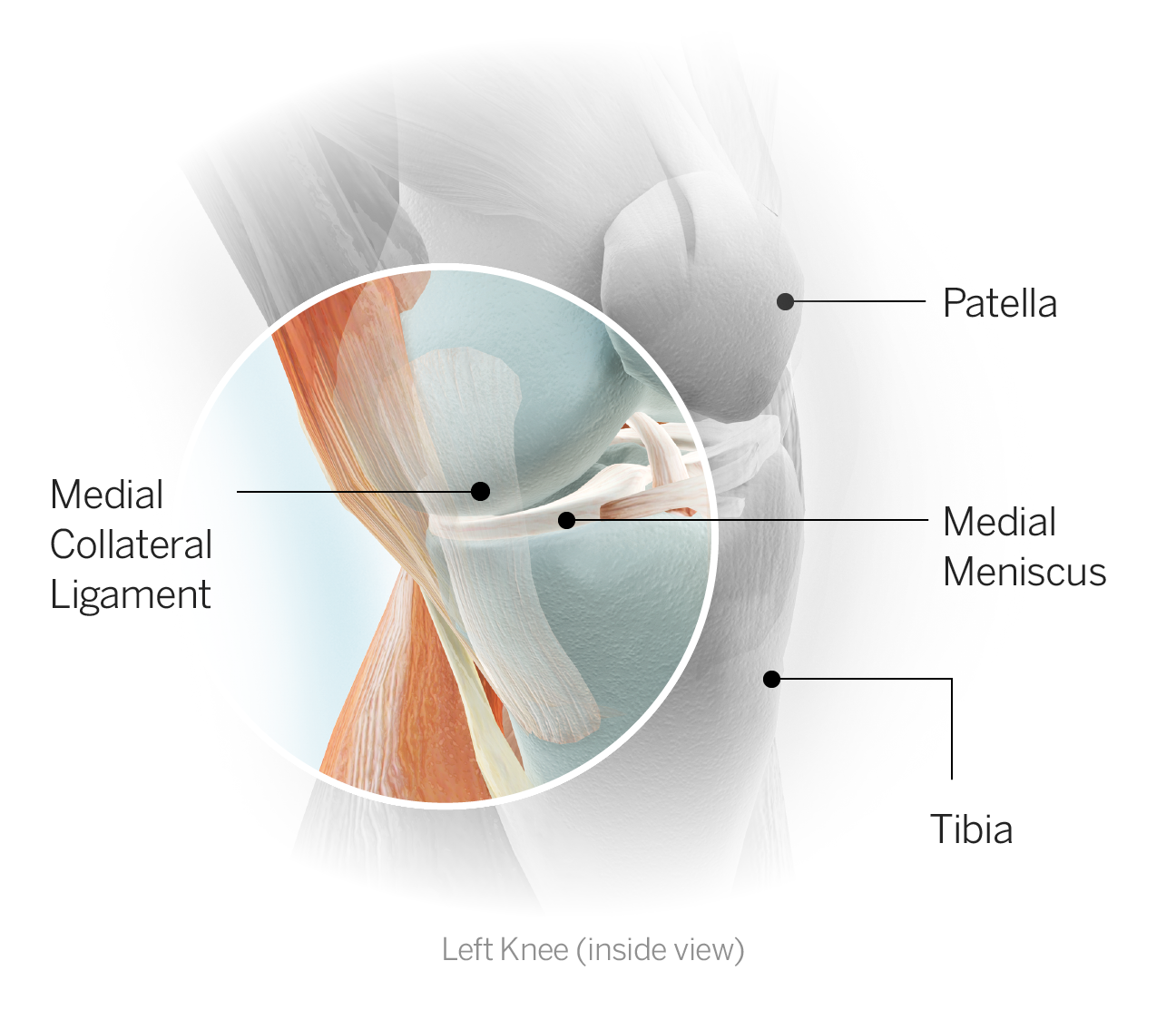Golden State Warriors forward Kevin Durant left Tuesday night's game against the Washington Wizards with 10 minutes remaining in the first quarter due to a left knee injury. On Wednesday, the Warriors reported that the NBA All-Star sustained a Grade 2 medial collateral ligament (MCL) sprain and a tibial bone bruise.
A review of the video showing the accidental collision of teammate Zaza Pachulia with Durant's left knee shows a mechanism of injury consistent with the resultant diagnosis. Just prior to Pachulia making contact with Durant's knee, Durant initiates a lateral step to his right - a movement that puts his left leg in a position such that when Pachulia does make contact, the force goes toward the inside back corner of his knee.
In a pure hyperextension injury, the knee would be forced in a straight-posterior or backward direction. In the case of Durant, the force is a combination of the backward and inward (medial) directions. That stress to the medial knee, also called a valgus stress, places stress on the MCL, the ligament that reinforces the inner knee and the result is a partial tear, or Grade 2 sprain. The combination of the medial force with the posterior force means that some of the soft tissue structures on the back inner corner of the knee were also subject to increased stress.
The other aspect of Durant's injury, the tibial bone bruise, is a direct consequence of the same force. The knee joint is made up of the thigh bone (femur) atop the shin bone (tibia). As Pachulia falls into Durant's knee, the bones come in to hard contact inside the joint which creates the bone bruise. Had the contact been severe enough to cause a fracture, it could have cost Durant the remainder of the NBA season. In fact, in the milliseconds in which the injury took place Durant was fortunate that his left foot was not firmly planted on the ground (a closer look at the video shows his left foot moving outward as he is hit). This may have helped prevent a more substantial injury to the major ligaments of the knee.

While ultimately the news is good for Durant in that this was not a season-ending injury, the nature of the injury still warrants a cautious return to action. The ligament needs time to heal to the point where there is no feeling of instability when Durant pushes off or cuts to the inside. The more significant component, however, may be the bone bruise. Not only is the bruising painful but the bone also has to be protected from excessive loading to allow it to completely heal. Protection means not fully weight bearing early on in the recovery process, then gradually introducing increased weight bearing when walking, and eventually transitioning to two-legged jumping and landing. The final phase is being able to land on one leg and absorb full weight, something that could exceed a month, depending on Durant's ability to heal.
Return to actual competition means Durant's leg has to not only be able to withstand the impact of running and jumping, but it also needs to tolerate planting and pivoting with sharp deceleration, quick change of direction and rotational maneuvers -- all without hesitation or apprehension in the traffic that occurs under the basket. While Durant can be expected to gradually increase his workload once cleared for basketball activity, it's important to consider the progression from shooting easy jumpers, to scrimmaging to playing without restrictions takes time.
The Warriors stated there is currently no timetable for Durant's return, but did not rule out a return prior to the end of the regular season. He will be re-evaluated in four weeks at which point the team will provide an update. It's worth noting that the end of the regular season will arrive in six weeks. Whether or not Durant returns to action within six weeks is not critical, but his return to full health, whatever the ultimate time frame, is imperative if he is to be a factor in the postseason for the Warriors.
